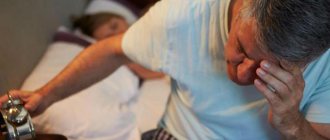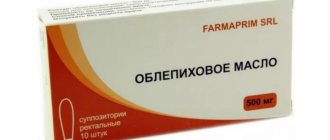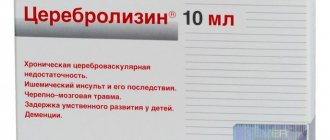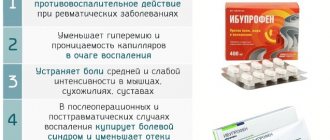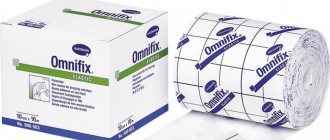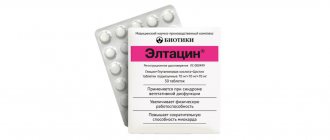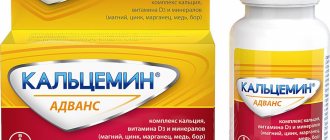"Traumel" is a medicinal product that is produced in the form of a gel and medicine. Contains extracts of more than 10 plants. It has analgesic and anti-inflammatory effects. Apply to intact (no wounds) skin with a small strip up to 5-6 times a day.
Nosological classification (ICD-10)
- M65.4 Tenosynovitis of the styloid process of the radius [de Quervain's syndrome]
- M71 Other bursopathies
- M77.0 Medial epicondylitis
- M77.1 Lateral epicondylitis
- M77.9 Enthesopathy, unspecified
- R60.0 Localized edema
- T14.3 Dislocation, sprain and damage to the capsular-ligamentous apparatus of a joint of an unspecified area of the body
- T14.9 Injury, unspecified
- T88.9 Complication of surgical and therapeutic intervention, unspecified
Indications for use Traumeel
When patients ask: what is Traumeel gel, an experienced pharmacist will say - this is the safest drug for inflammatory processes. The medication is indicated as part of the general treatment of diseases. Traumeel is actively used for joint diseases such as tendovaginitis, bursitis, styloiditis, epicondylitis, periarthritis and so on. The medication can be used to treat bruises, dislocations, and sprains caused by injuries. The product is recommended in the postoperative period to speed up recovery.
Compound
| Homeopathic drops for oral administration | 1 fl. |
| 100 g required for preparation | |
| active substances: | |
| Arnica montana (Arnica) (arnica montana (arnica) D2 | 5 g |
| Calendula officinalis (Calendula) (calendula officinalis (calendula) D2 | 5 g |
| Hamamelis virginiana (Hamamelis) (witch hazel) D2 | 5 g |
| Achillea millefolium (Millefolium) (Achillea millefolium (millefolium) D3 | 5 g |
| Atropa bella-donna (Belladonna) (atropa bella-donna (belladonna) D4 | 25 g |
| Aconitum napellus (Aconitum) D3 | 10 g |
| Mercurius solubilis Hahnemanni (Mercurius solubilis Hahnemanni) D8 | 10 g |
| Hepar sulfuris (Hepar sulfuris calcareum) (Hepar sulfuris (Hepar sulfuris calcareum) D8 | 10 g |
| Chamomilla recutita (Chamomilla) (Chamomilla recutita (Chamomilla) D3 | 8 g |
| Symphytum officinale (Symphytum) (symphytum officinale (symphytum) D8 | 8 g |
| Bellis perennis (Bellis perennis) D2 | 2 g |
| Echinacea (echinacea) D2 | 2 g |
| Echinacea purpurea (Echinacea purpurea) D2 | 2 g |
| Hypericum perforatum (Hypericum) (hypericum perforatum (hypericum) D2 | 1 g |
| ethanol | about 35 vol.% |
| Ointment for external use, homeopathic | 1 tube |
| 100 g required for preparation | |
| active substances: | |
| Arnica montana (Arnica) (arnica montana (arnica) D3 | 1.5 g |
| Calendula officinalis (Calendula) (calendula officinalis (calendula) × | 0.45 g |
| Hamamelis virginiana (Hamamelis) (hamamelis virginiana (witch hazel) × | 0.45 g |
| Echinacea (echinacea) × | 0.15 g |
| Echinacea purpurea (Echinacea purpurea) × | 0.15 g |
| Chamomilla recutita (Chamomilla) (Chamomilla recutita (Chamomilla) × | 0.15 g |
| Symphytum officinale (Symphytum) (symphytum officinale (symphytum) D4 | 0.1 g |
| Bellis perennis | 0.1 g |
| Hypericum perforatum (Hypericum) (hypericum perforatum (hypericum) D6 | 0.09 g |
| Achillea millefolium (Millefolium) (Achillea millefolium (millefolium) × | 0.09 g |
| Atropa bella-donna (Belladonna) (atropa bella-donna (belladonna) D1 | 0.05 g |
| Aconitum napellus (Aconitum) D1 | 0.05 g |
| Mercurius solubilis Hahnemanni (Mercurius solubilis Hahnemanni) D6 | 0.04 g |
| Hepar sulfuris (Hepar sulfuris calcareum) (Hepar sulfuris (Hepar sulfuris calcareum) D6 | 0.025 g |
| excipients: hydrophilic base stabilized with 13.8% (by volume) ethanol | |
| composition of the hydrophilic base: emulsifying cetyl stearyl alcohol - 8.007 g; liquid paraffin - 9.342 g, white petroleum jelly - 9.342 g; water - 60.579 g; ethanol 96% (by volume) - 9.335 g |
| Homeopathic solution for intramuscular and periarticular administration | 1 amp. (2.2 ml) |
| active substances: | |
| Arnica montana (Arnica) (arnica montana (arnica) D2 | 2.2 µl |
| Calendula officinalis (Calendula) (calendula officinalis (calendula) D2 | 2.2 µl |
| Hamamelis virginiana (Hamamelis) (witch hazel) D1 | 0.22 µl |
| Achillea millefolium (Millefolium) (Achillea millefolium (millefolium) D3 | 2.2 µl |
| Atropa bella-donna (Belladonna) (atropa bella-donna (belladonna) D2 | 2.2 µl |
| Aconitum napellus (Aconitum) (aconitum napellus (aconitum) D2 | 1.32 µl |
| Mercurius solubilis Hahnemanni (Mercurius solubilis Hahnemanni) D6 | 1.1 µl |
| Hepar sulfuris (Hepar sulfuris calcareum) (Hepar sulfuris (Hepar sulfuris calcareum) D6 | 2.2 µl |
| Chamomilla recutita (Chamomilla) (Chamomilla recutita (Chamomilla) D3 | 2.2 µl |
| Symphytum officinale (Symphytum) (symphytum officinale (symphytum) D6 | 2.2 µl |
| Bellis perennis (Bellis perennis) D2 | 1.1 µl |
| Echinacea (echinacea) D2 | 0.55 µl |
| Echinacea purpurea (Echinacea purpurea) D2 | 0.55 µl |
| Hypericum perforatum (Hypericum) (hypericum perforatum (hypericum) D2 | 0.66 µl |
| excipients: sodium chloride to establish isotonia - about 9 mg/ml; water for injection - up to 2.2 ml |
| Homeopathic lozenges | 1 table |
| active substances: | |
| Arnica montana (Arnica) (arnica montana (arnica) D2 | 15 mg |
| Calendula officinalis (Calendula) (calendula officinalis (calendula) D2 | 15 mg |
| Hamamelis virginiana (Hamamelis) (witch hazel) D2 | 15 mg |
| Achillea millefolium (Millefolium) (Achillea millefolium (millefolium) D3 | 15 mg |
| Atropa bella-donna (Belladonna) (atropa bella-donna (belladonna) D4 | 75 mg |
| Aconitum napellus (Aconitum) D3 | 30 mg |
| Mercurius solubilis Hahnemanni (Mercurius solubilis Hahnemanni) D8 | 30 mg |
| Hepar sulfuris (Hepar sulfuris calcareum) (Hepar sulfuris (Hepar sulfuris calcareum) D8 | 30 mg |
| Chamomilla recutita (Chamomilla) (Chamomilla recutita (Chamomilla) D3 | 24 mg |
| Symphytum officinale (Symphytum) (symphytum officinale (symphytum) D8 | 24 mg |
| Bellis perennis (Bellis perennis) D2 | 6 mg |
| Echinacea (echinacea) D2 | 6 mg |
| Echinacea purpurea (Echinacea purpurea) D2 | 6 mg |
| Hypericum perforatum (Hypericum) (hypericum perforatum (hypericum) D2 | 3 mg |
| excipients: magnesium stearate - 1.5 mg; lactose - to obtain a tablet weighing 0.302 g |
Description of the dosage form
Homeopathic drops for oral administration: transparent, colorless or light yellow liquid with the odor of ethanol.
Ointment for external use, homeopathic: white to yellowish or pinkish-white in color, with a weak characteristic odor; There should be no rancid odor.
Homeopathic solution for intramuscular and periarticular administration: colorless, transparent, odorless liquid.
Homeopathic lozenges: round, flat-cylindrical in shape, chamfered, white or yellowish-white, sometimes with yellow, orange or gray inclusions. There is practically no smell.
Contraindications
For all dosage forms
increased individual sensitivity to the components of the drug (known increased sensitivity to yarrow, chamomile, marigold, perennial daisy, echinacea, mountain arnica or other plants of the Asteraceae family);
tuberculosis;
leukemia;
collagenosis;
multiple sclerosis;
autoimmune diseases, including AIDS, HIV infection;
children under 12 years of age (due to insufficient clinical data) - for lozenges, solution for intramuscular and periarticular administration and drops for oral administration.
children under 3 years of age (due to insufficient clinical data) - for homeopathic ointment for external use.
Additionally for homeopathic lozenges
lactase deficiency, lactose intolerance, glucose-galactose malabsorption.
Additionally for homeopathic drops for oral administration
With caution: liver disease, alcoholism, traumatic brain injury and brain diseases.
When not to use
The medicine is not indicated for allergies to its components. This is due to the high likelihood of an allergic reaction to yarrow, chamomile, calendula, echinacea and other components. Intolerance to the emulsifying cetyl stearyl alcohol is also possible.
The medication should not be used for tuberculosis of the lungs, collagenosis, or multiple sclerosis. The drug is not indicated for patients with acquired immunodeficiencies, HPV, and autoimmune diseases.
The medicine should not be used in children under 3 years of age. This group of patients is highly likely to have an allergic reaction to herbal components.
Side effects
For homeopathic lozenges, homeopathic solution for intramuscular and periarticular administration and homeopathic drops for oral administration
Allergic reactions are possible. In rare cases, increased salivation may occur after taking the drug. If side effects develop, you should stop taking the drug and consult your doctor.
For ointment for external use homeopathic
When using the ointment, in some cases hypersensitivity reactions (allergic skin reactions) may occur. If side effects are detected, incl. not described in the instructions, you should stop taking the drug and consult your doctor.
Additionally for a solution for intramuscular and periarticular administration, homeopathic. Very rarely - the appearance of redness, swelling, itching at the injection site.
The creation of a large number of new highly effective drugs is due to the achievements of modern medicine in the prevention and treatment of many serious diseases, both in general and in dental practice. Along with successes, new problems have emerged: the higher the activity of the drug, the more pronounced its side effects. Physicians and patients are concerned about a significant increase in complications from drug therapy, which prompts the search for alternative treatment methods [1].
Homeopathic medicines are increasingly used to treat various dental diseases. The homeopathic method of treatment is approved for use in the state healthcare system by order of the Ministry of Health and Medical Industry of the Russian Federation dated November 29, 1995 [2].
Homeopathy is a treatment system created at the beginning of the 19th century by the German physician Samuel Hahnemann [3]. He considered the symptoms of the disease not a manifestation of a pathogenic factor, but a protective reaction of the body. By counteracting this defensive reaction, allopathic medicine prevents the patient from being completely cured. At the same time, when using a homeopathic drug that causes the “most similar” picture of the disease in the body of a healthy subject, it is not suppression that occurs, but the activation of adaptation mechanisms to restore the disturbed homeostasis in the body. The selection of homeopathic medicines should be carried out strictly individually, taking into account not only all existing symptoms of the disease, but also the characteristics of the patient’s somatic and emotional reactions to various influences (heat, cold, wind, dampness, stress, etc.). As a result, collecting an anamnesis and selecting the “most similar” drug takes a lot of time and requires highly qualified doctors, so classical homeopathy is unlikely to be widespread in dental practice in the near future.
The possibilities for using homeopathic medicines have expanded in recent years due to the creation of official laboratory-developed complex antihomotoxic drugs that can be used by doctors who do not specialize in homeopathy [4].
Homotoxicology is one of the alternative areas of medical science; it is a synthesis of modern advances in medicine and the homeopathic approach to treating patients.
The founder of the direction and method of homotoxicology as a complex therapy was the German physician and scientist Hans-Heinrich Reckeweg in 1948-1949. According to his theory, the body is an open biological system striving for balance. However, the balance can be disrupted, according to the theory of homotoxicosis, by endogenous and exogenous toxins (homotoxins).
Taking into account the three most important aspects of the theory: regulatory impact on an open biological system; binding and removing substances toxic to the body and, finally, stimulating its defenses, a number of drugs were created - complex biological antihomotoxic drugs. The main manufacturer is (Baden-Baden, Germany).
Antihomotoxic drugs are prepared from natural components: extracts from plants, extracts from animal organs, sterilized cultures of microorganisms, minerals, trace elements, catalysts, etc. All these components are processed according to the principles of homeopathic potentization technology, i.e. methods of sequential dilution and dynamization of components. In antihomotoxic drugs, like homeopathic ones, the biologically active principle is not concentrated substances, but their microdoses. Microdoses entering the body do not overload the body, but, on the contrary, stimulate its systems and activate additional protective mechanisms.
In dental practice, the homeopathic drug Traumeel S (Latin - Traumeel S.) (Germany) is successfully used.
The drug Traumeel S contains components of plant and mineral origin: arnica, calendula, witch hazel, millefolium, belladonna, aconite, Mercurius solubilis hahnemann, hepar sulfur, chamomilla, symphytum, bellis perennis, echinacea purpurea and hypericum.
Traumeel S is prescribed for diseases of the musculoskeletal system, inflammatory and degenerative diseases of the joints, periarticular tissues and muscles (myositis, myalgia, osteoarthritis, osteochondrosis, tenosynovitis, bursitis, epicondylitis, periarthritis); various injuries of joints, muscles, periarticular tissues; bruises, sprains, dislocations, hemorrhages, bone fractures, swelling after operations or after injuries, periodontitis, periodontal disease, gingivitis.
The antihomotoxic agent Traumeel S is available in four dosage forms: ointment, drops, tablets and solution for injection. Ointment, tablets and drops are over-the-counter drugs that are sold freely and are approved for self-use by patients.
Traumeel S has the following complex of actions: anti-inflammatory, antiexudative, immunostimulating, regenerating, analgesic, antihemorrhagic, venotonic agent.
The anti-inflammatory activity of Traumeel S is comparable to the effectiveness of classical non-steroidal anti-inflammatory drugs (NSAIDs), but the homeopathic drug Traumeel S has fewer side effects.
Numerous therapeutic effects of the drug Traumeel S are due to the following mechanisms:
- anti-inflammatory effects are exerted by herbal components such as Aconite and Arnica, and components containing homeopathic doses of mercury, Mercurius solubilis Hahnemann; they make the vessel wall dense and, accordingly, reduce swelling and the formation of effusions;
— Aconitum, Arnica, Hamamelis, Hypericum, Millefolium
have hemostatic properties in case of injuries and prevent the formation of hematomas and hemorrhages;
- simultaneously Aconite, Arnica
and
Hypericum
together with
Chamomilla
have an analgesic effect;
— Hepar sulfur
and plant components such as
Arnica, Calendula, Echinacea
and
Symphytum,
activate metabolic processes and help tissues regenerate and recover.
Contraindications:
Hardly ever. It is not recommended to use the drug Traumeel C for persons with allergies to the components that make up the drug.
Traumeel C ointment: hypersensitivity to Arnica,
the appearance of skin rashes at the site of application of the ointment, violation of the integrity of the skin.
Solution for injection Traumeel C: hypersensitivity to Compositae.
Traumeel S should not be used for systemic diseases such as tuberculosis, leukemia, collagenosis, multiple sclerosis, AIDS.
Use during pregnancy and lactation:
Traumeel S, like other homeopathic medicines, should be used during pregnancy and lactation only after prior consultation with a doctor.
Side effects:
Traumeel S is virtually free of side effects.
Possible arthralgia - joint pain (with injections of Traumeel S; can be relieved with anti-inflammatory therapy and local anesthetics);
— hypersalivation (in case of increased salivation, it is necessary to stop using the drug);
- allergic skin reactions requiring discontinuation of the drug (including hypersensitivity to Asteraceae).
Special instructions and precautions:
It is not recommended to use Traumeel S ointment on large areas of the body.
Drug interactions:
the effectiveness of Traumeel S therapy increases with the simultaneous use of several dosage forms of the drug.
The prescription of complex homeopathic medicines, including Traumeel S, does not exclude the use of other medicines used for a particular disease.
The antihomotoxic drug Traumeel S is widely used in a variety of fields of medicine.
Traumeel S occupies one of the leading places in the arsenal of drugs in sports traumatology.
A large number of studies conducted at the Goethe Institute in Frankfurt am Main according to the most stringent standards using placebo and double-blind control have proven the effectiveness of Traumeel S in patients with ankle sprains, arthrosis, hematomas, tendon inflammation (tenosynovitis), compactions muscles (myogelosis), bruises, swelling, inflammation of the periarticular bursae (bursitis) and other joint diseases that are often found in professional athletes [5].
The use of Traumeel S in the form of local blockades is a fairly effective means of stopping both paroxysmal pain and permanent sensoropathic syndrome in the most common types of prosopalgia (trigeminal neuralgia and glossalgia) and can be successfully used in practice [6].
Traumeel S ointment, when applied topically, in contrast to Flexen gel and 10% butadione ointment, increases the content of IgA and slgA in the saliva of patients suffering from catarrhal gingivitis and periodontitis, which indicates an improvement in the state of local immunity in the oral cavity when using this drug [7].
In a comparative assessment of the anti-inflammatory and immunostimulating effects of a number of homeopathic drugs: Traumeel S, Engystola and Echinacea compositum C in the treatment of moderate periodontitis, it was proven that the drug Traumeel S has the maximum effectiveness, which helps to improve the clinical picture, normalize the composition of the microflora of periodontal pockets, and increase the functional activity of granulocytes and correction of microcirculatory disorders in gum tissue to a greater extent than other homeopathic medicines [8].
The effectiveness of complex treatment of gingivitis and periodontitis of mild and moderate severity using the homeopathic drug Traumeel S in the form of an injection along the transitional fold was assessed by biochemical methods of studying oral fluid.
There was a decrease in the activity of lactate dehydrogenase in oral fluid by 22.5%, aspartate aminotransferase by 1.2 times, and alanine aminotransferase by 44%. Carrying out all stages of professional oral hygiene and the action of the active components of the homeopathic drug Traumeel S can reduce inflammation in periodontal tissues [9].
A clinical dental examination of helicopter pilots of the Russian Armed Forces was carried out. It was revealed that the prevalence of inflammatory periodontal diseases is 67.3%. A plan and method of complex treatment of periodontitis in helicopter pilots using the homeopathic drug Traumeel S have been developed. Under the influence of treatment using the drug Traumeel S, a significant decrease in clinical indices is observed. The drug Traumeel S has a pronounced anti-inflammatory, immunomodulatory and antioxidant effect [10].
The relationship and interdependence of stomatitis, chronic recurrent aphthous stomatitis, lichen planus, pemphigus and other types of lesions of the oral cavity and pathology of the digestive system have been noted by many authors [13, 14]. This is due to the similarity of the morphological structure and the commonality of their functions, since the oral cavity is the initial section of the digestive system. The main treatment for these diseases is the administration of NSAIDs. Among the complications when prescribing NSAIDs are allergic reactions in the oral cavity (erythema multiforme, including Stevens-Jones syndrome), as well as toxic epidermal necrolysis (Lyle syndrome). Similar changes, which are even more severe, were observed after glucocorticoid therapy, which causes suppression of the immune status, which can lead to ulceration of the mucous membrane of the oral cavity and gastrointestinal tract, the development of dysbiosis, candidiasis and pyoderma.
Despite the presence of a wide arsenal of highly active drugs used in the treatment of diseases of the oral mucosa against the background of gastrointestinal pathology, traditionally used treatment does not always give the desired results; acute inflammatory processes can turn into subacute and chronic, and in severe cases it is often observed only a temporary improvement in the patient’s condition, followed by a relapse of the disease.
The clinical situations described above indicate the need to search for new approaches to the treatment of diseases of the oral mucosa. One of them is antihomotoxic therapy.
Conducted studies aimed at studying the therapeutic effectiveness of complex antihomotoxic drugs Traumeel S in the treatment of chronic recurrent aphthous stomatitis, herpetic gingivostomatitis, fissures of the lip and various forms of lichen planus confirm the effectiveness, good tolerability and safety of the drug Traumeel S, which allows us to consider antihomotoxic therapy as an alternative to conventional treatment methods [11].
According to world literature, the prevalence of periodontal diseases reaches 98%, and among people with diabetes - 100%. The pathological process in the periodontium in patients with diabetes mellitus is characterized by frequent exacerbations. Local symptoms are signs of active inflammation in periodontal tissues.
The introduction of new highly active drugs makes it possible to achieve certain successes, but the problem of treating inflammatory processes in dentistry is far from being resolved, especially in the chronic course of the process [15]. One of the reasons for this is the significant increase in the number of complications from drug therapy.
The homeopathic drug Traumeel S, used in the complex treatment of periodontitis in diabetes mellitus and in patients with normal glucose tolerance but at risk of developing diabetes mellitus, has a pronounced anti-inflammatory effect on the periodontal condition [12].
However, in the literature we have studied, information about the effectiveness of the drug Traumeel S in the complex treatment of inflammatory periodontal diseases is rare. In addition, there is practically no data on how the composition of oral fluid, enzyme activity and the concentration of immunoglobulins in saliva changes after surgical treatment of chronic periodontitis and the use of homeopathic medicines.
Directions for use and doses
Homeopathic drops for oral administration. Orally, 15 minutes before meals, 10 drops (pre-diluted in 1 teaspoon of water and kept in the mouth for 1-2 minutes before swallowing) 3 times a day, for swelling of soft tissues - 30 drops 3 times a day. Course of treatment: for post-traumatic conditions - 2 weeks or more; for inflammatory diseases - at least 3-4 weeks.
Homeopathic ointment for external use. Locally, unless otherwise prescribed, for children over 3 years of age and adults, a sufficient amount of ointment is applied in a thin layer to the skin of painful areas of the body and rubbed in with light movements 2-3 times a day. It is possible to apply an ointment bandage. The course of treatment for post-traumatic conditions is 2 weeks or more; for inflammatory diseases - at least 3-4 weeks.
Homeopathic solution for intramuscular and periarticular administration. IM, periarticular: 1–2 amp. 1–3 times a week. The course of treatment is 4–5 weeks. The frequency of use and duration of the course are prescribed by the doctor.
Note: it is recommended to take several dosage forms of the drug simultaneously (for example, tablets or drops along with ointment and injections).
Opening the ampoule. The colored dot should be at the top. The contents in the ampoule head should be shaken off by lightly tapping. After this, break off the upper part of the ampoule by pressing at the colored point.
Homeopathic lozenges. Usually dissolve 1 tablet in the mouth. 3 times a day 15 minutes before meals, keep the tablet in the mouth until completely absorbed. Course of treatment: for dislocations and sprains - 2 weeks or more; for inflammatory diseases - at least 3-4 weeks. Use of the drug for more than 8 weeks is possible after consultation with a doctor.
Analogues of Traumeel ointment and gel
The drug Traumeel has non-structural analogues that differ in composition, but can have a similar effect on the body. The closest analogue is the drug Cel T. It also belongs to homeopathic remedies and comes in the form of tablets and ointments. The product helps restore articular cartilage, relieves pain, and heals the skin and soft tissues. The medicine is prescribed for joint diseases, as well as for injuries (fractures, sprains, bruises).
Voltaren
Another analogue of Traumeel is Voltaren gel. The active component of the drug is diclofenac (non-steroidal anti-inflammatory drug). It is produced in the form of a gel. The drug is indicated for inflammatory diseases of the joints, pathologies of the spine (hernia, strangulation) and others. The medicine is applied topically. It is prescribed as an adjuvant (simultaneously with Diclofenac, Nise and other systemic medications).
Teraflex
The next similar medication is Teraflex. It is produced in the form of capsules or cream. The medicine belongs to the group of chondroprotectors. It restores cartilage tissue and prevents its further destruction. The drug is indicated for osteoarthritis.
Chondroxide
Chondroxide is also considered an analogue. It is produced in the form of tablets, ointment and gel. The drug restores the structure of cartilage and is prescribed for diseases of the joints and spine.
Nise
Nise - refers to non-steroidal anti-inflammatory drugs. The drug is sold in the form of tablets, gel, spray. It is prescribed for inflammatory diseases of the musculoskeletal system. The medicine has more undesirable effects in contrast to medicines from the homeopathy group.
Vishnevsky ointment
Similar external remedies include Vishnevsky ointment. It contains birch tar and bismuth oxide. The drug is well suited for soft tissue bruises and skin damage.
Traumeel is a homeopathic remedy that is used to treat joint pathologies, fractures, and bruises. The medicine is prescribed less frequently in traditional medicine, as it is not included in the standards of treatment. The advantage of the medication is the absence of unwanted effects in the form of overload of the liver and kidneys. Due to the presence of very small dosages of active substances in the medicine, an overdose during administration is not possible. In the acute period of the disease, manifested by severe pain, it is advisable to use Traumeel as part of general therapy, and not as an independent drug. As a monotherapy, a homeopathic remedy is more suitable during the recovery period.
special instructions
For all dosage forms
When taking homeopathic medicines, existing symptoms may temporarily worsen (primary deterioration). In this case, you should stop taking the drug and consult your doctor. If side effects occur that are not described in the instructions for medical use, you should inform your doctor or pharmacist.
To increase the effectiveness of treatment, it is recommended to take various dosage forms of the drug, for example ointments and drops or tablets and injection solution.
Impact on the ability to drive vehicles and operate machinery. Does not affect.
For homeopathic drops for oral administration
The maximum single dose of the drug (30 drops) contains about 0.49 g of absolute ethyl alcohol (ethanol), the maximum daily dose of the drug (90 drops) contains about 1.47 g of absolute ethyl alcohol (ethanol).
The drug in the form of drops and ointments must be protected from overheating.
The bottle and tube should be closed immediately after taking the drug.
Additionally for homeopathic lozenges
Information for patients with diabetes: carbohydrate content in 1 table. of the drug corresponds to 0.025 XE.
Must be protected from moisture.
Close the pencil case immediately after using the drug.
Pharmacodynamics
Traumeel is a medicine that regulates the inflammatory process. Inflammation in the body is a protective reaction. It is manifested by swelling, pain, increased local temperature, redness and other signs. But sometimes the inflammatory reaction is very pronounced, which requires outside intervention. In traditional medicine, non-steroidal anti-inflammatory drugs, antihistamines, and glucocorticosteroids are used to relieve the inflammatory process. These drugs, influencing the mechanisms of humoral immunity, quickly relieve the symptoms of the disease, but severely overload the kidneys and liver.
Traumeel acts on the inflammatory process, gently interfering with its biochemical processes. The homeopathic medicine gradually reduces the severity of inflammation. At the same time, the medicine does not put a strain on the kidneys and liver.
Release form
Homeopathic drops for oral administration. 30 ml in a dark glass bottle of hydrolytic class III with a built-in PE dropper and a tamper evident screw cap made of polypropylene. Each bottle is placed in a cardboard pack.
Homeopathic ointment for external use. 50 or 100 g in an aluminum tube with a screw cap made of propylene. Each tube is placed in a cardboard pack.
Homeopathic solution for intramuscular and periarticular administration. 2.2 ml in ampoules of colorless glass of hydrolytic class I. Each ampoule is marked with a notch and a colored dot. 5 amp. placed in an open plastic blister pack. 1 or 20 open plastic blister packs (with 5 or 100 amps) are placed in a cardboard pack.
Homeopathic lozenges. 50 tablets each in white polypropylene cases with polypropylene lids. A label is glued to each pencil case and placed in a cardboard box.

